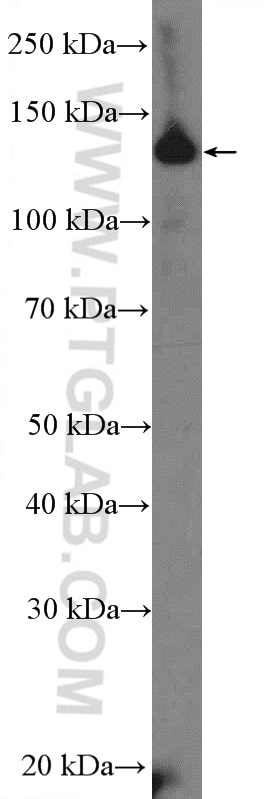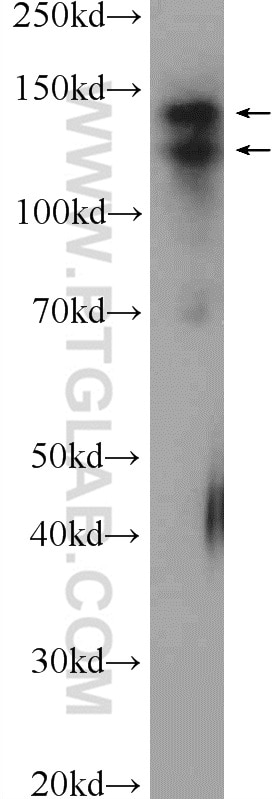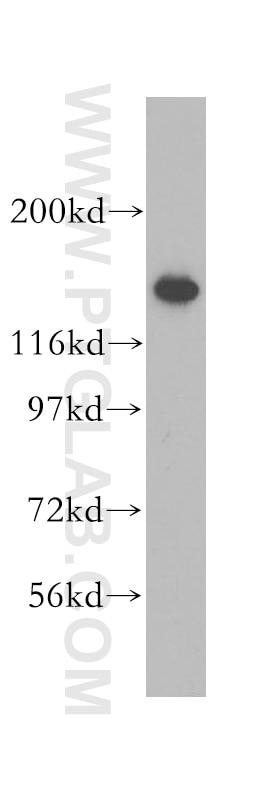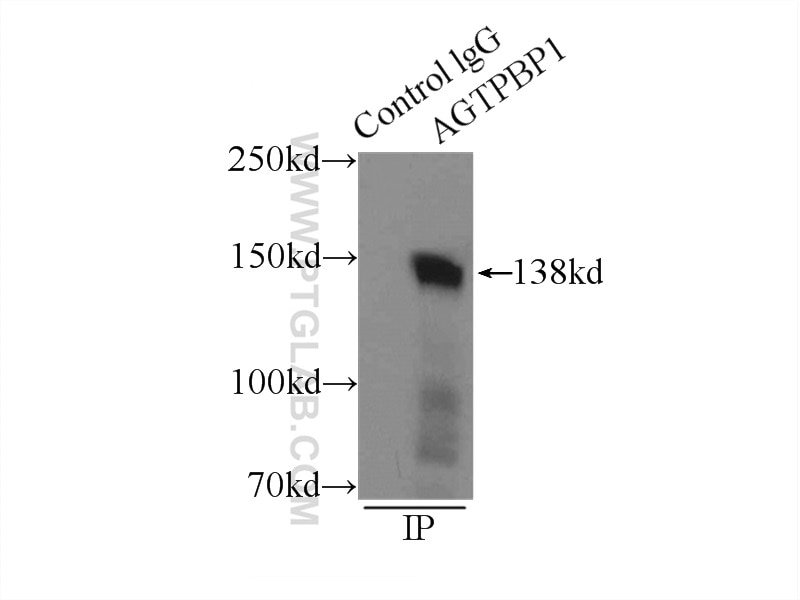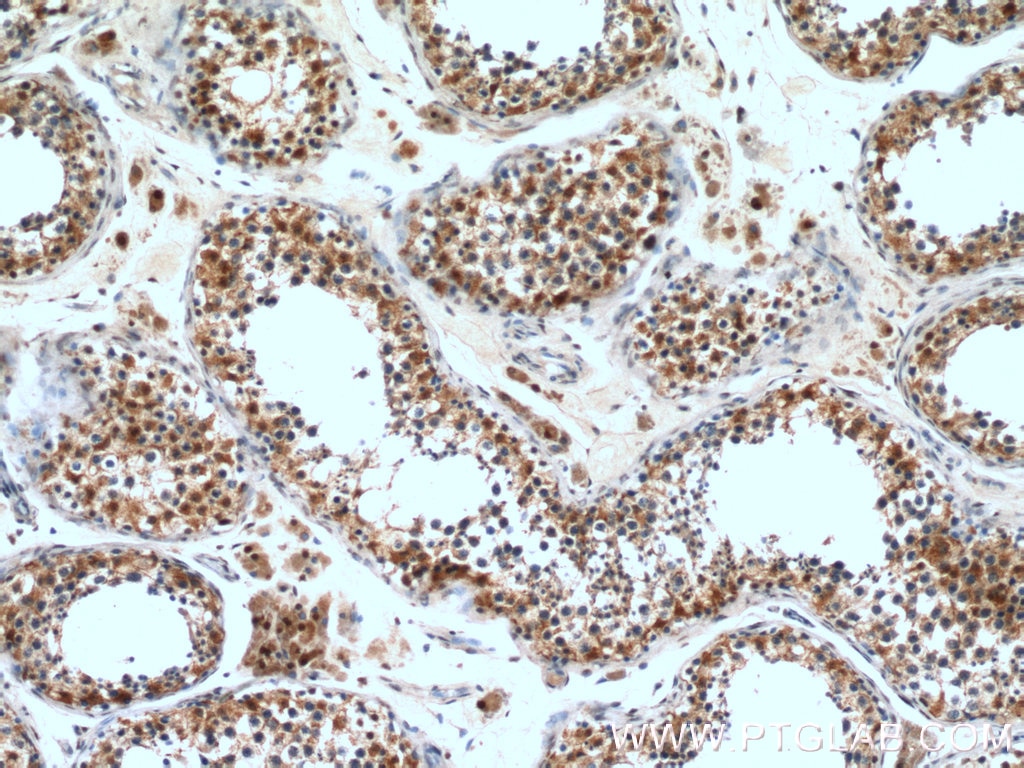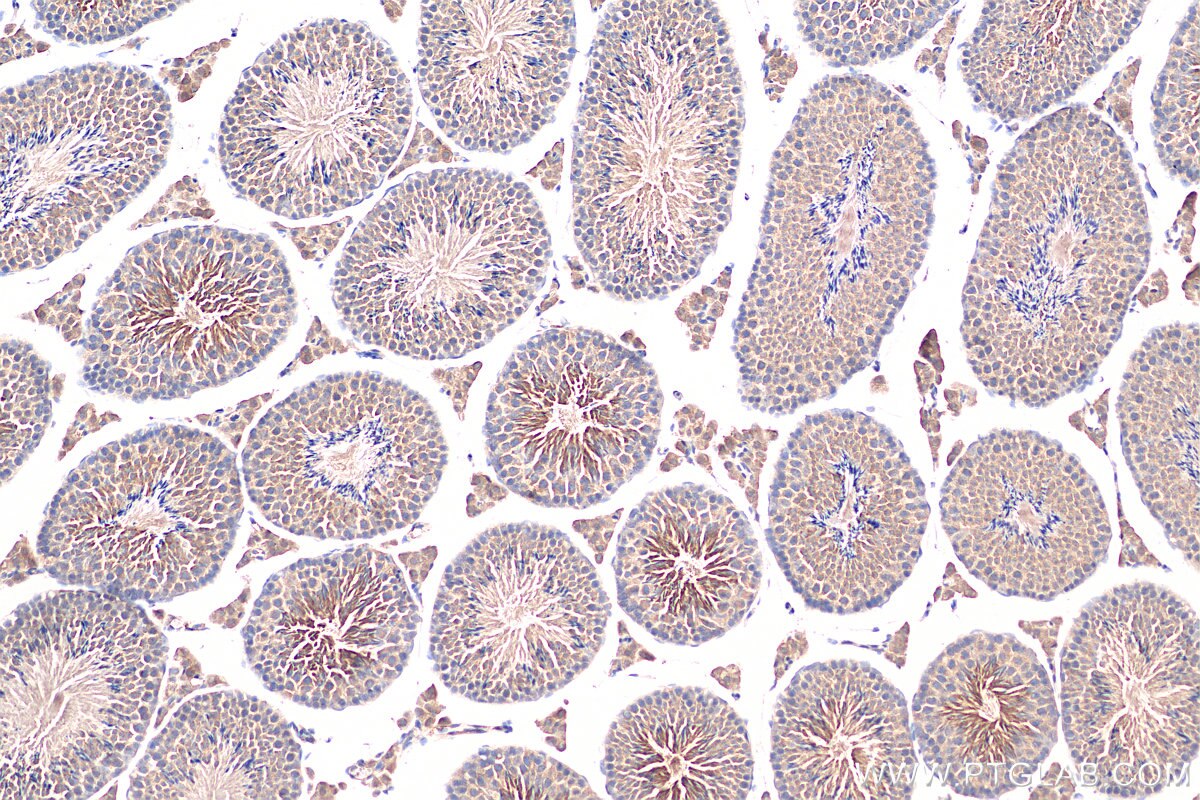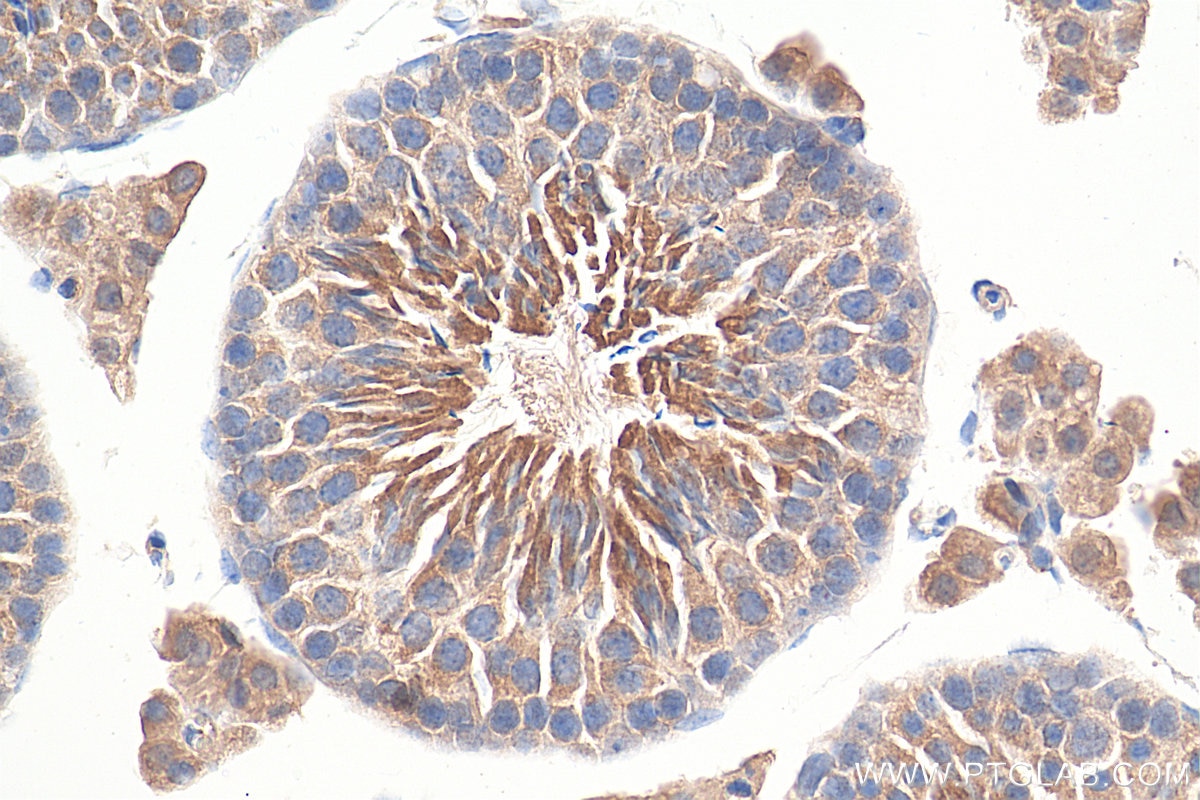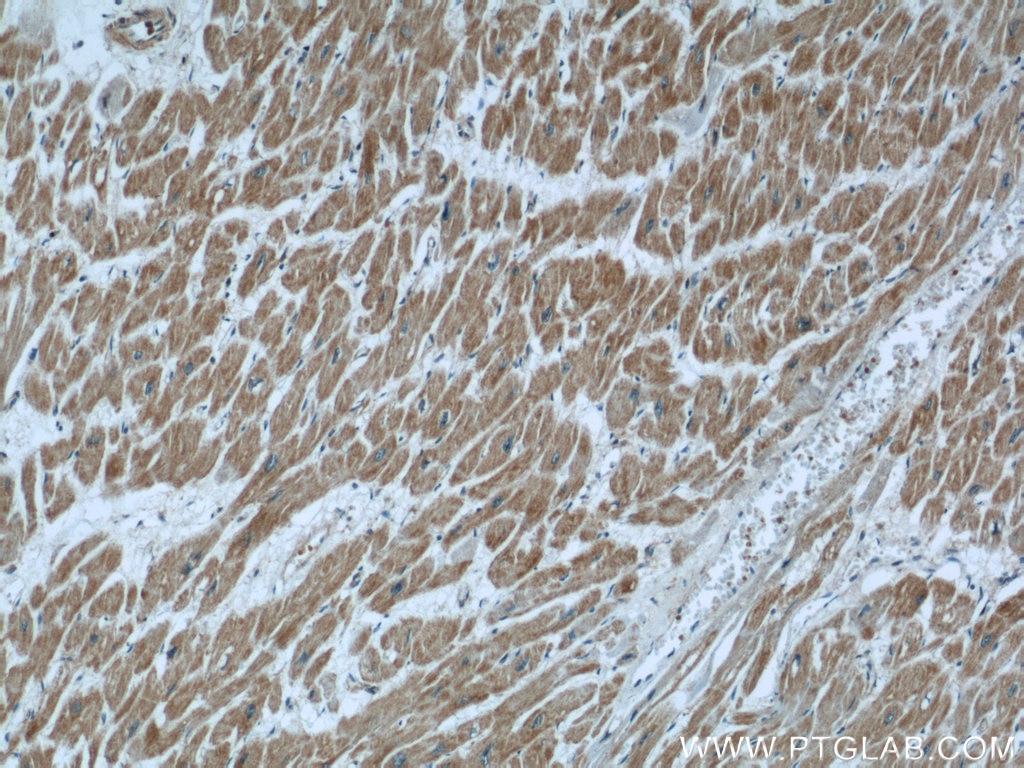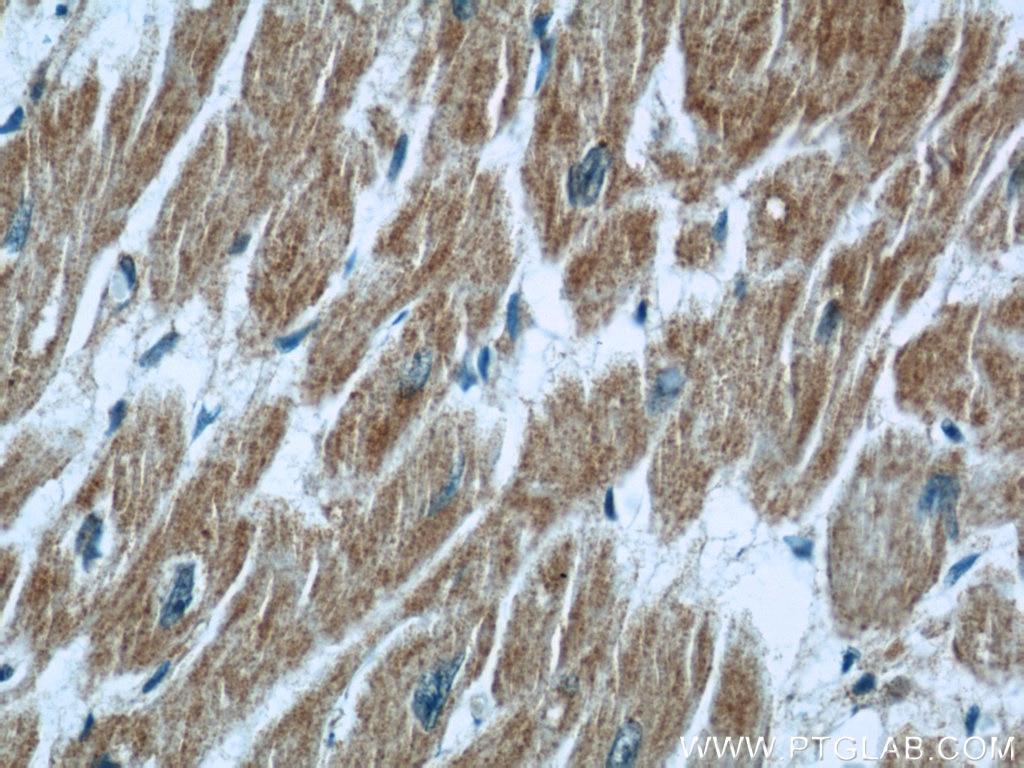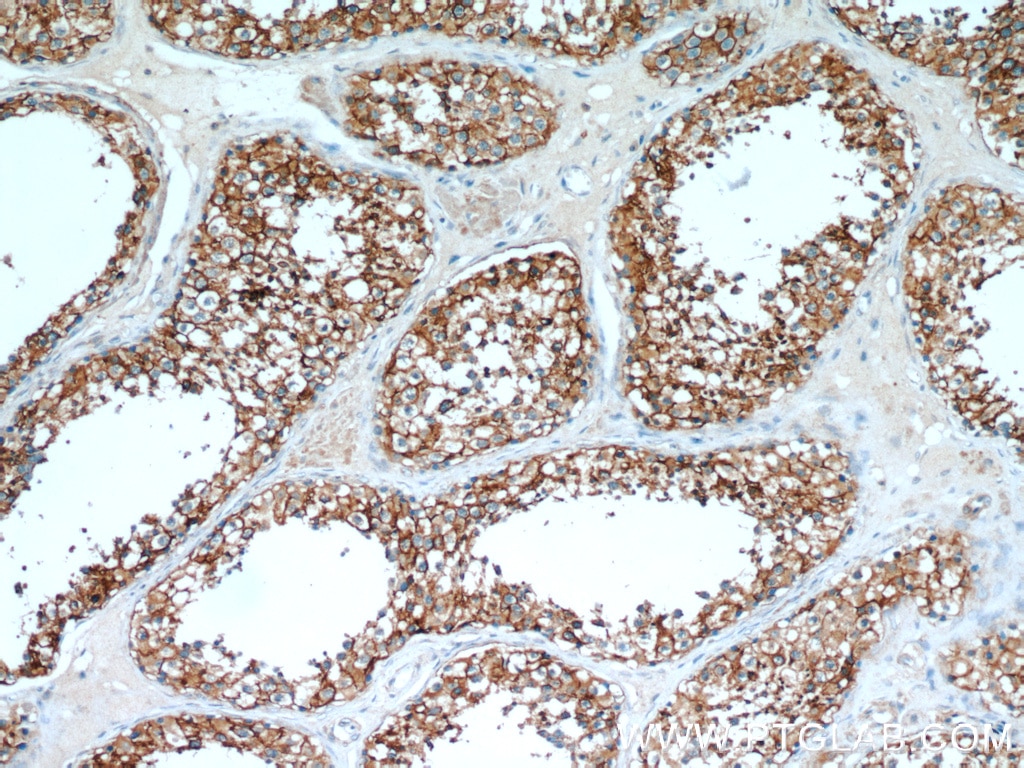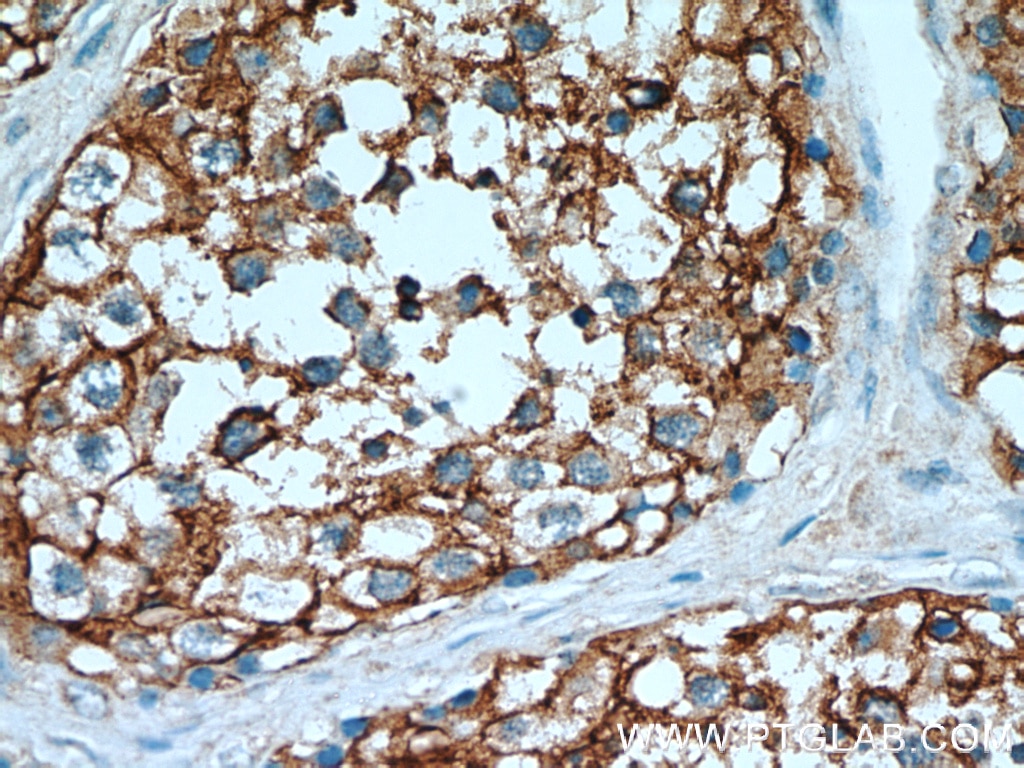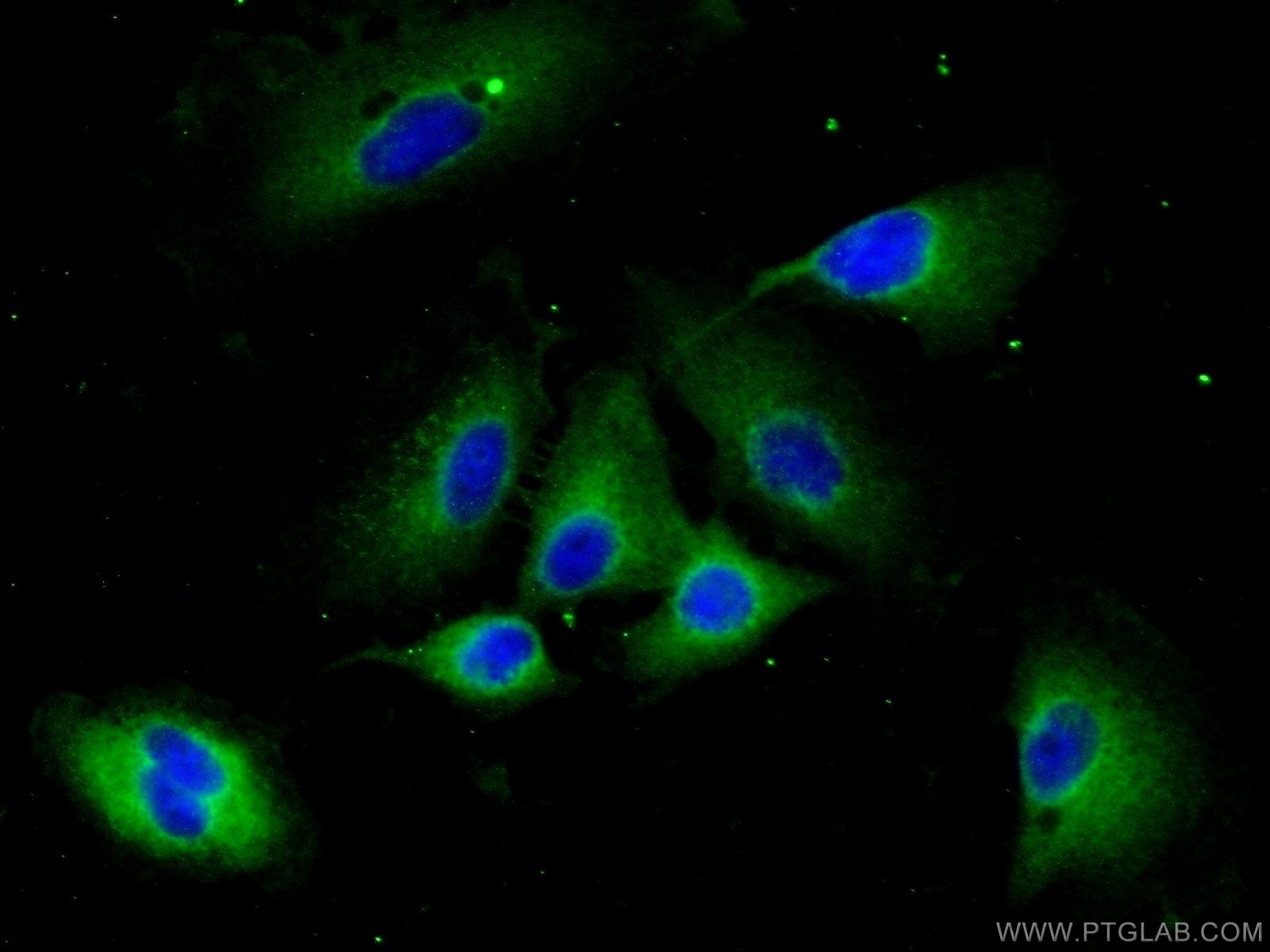- Phare
- Validé par KD/KO
Anticorps Polyclonal de lapin anti-CCP1
CCP1 Polyclonal Antibody for WB, IP, IF, IHC, ELISA
Hôte / Isotype
Lapin / IgG
Réactivité testée
Humain, souris et plus (1)
Applications
WB, IHC, IF/ICC, IP, ELISA
Conjugaison
Non conjugué
N° de cat : 14067-1-AP
Synonymes
Galerie de données de validation
Applications testées
| Résultats positifs en WB | tissu cérébral de souris, cellules A549, tissu testiculaire de souris |
| Résultats positifs en IP | tissu testiculaire de souris |
| Résultats positifs en IHC | tissu testiculaire humain, tissu cardiaque humain, tissu testiculaire de souris il est suggéré de démasquer l'antigène avec un tampon de TE buffer pH 9.0; (*) À défaut, 'le démasquage de l'antigène peut être 'effectué avec un tampon citrate pH 6,0. |
| Résultats positifs en IF/ICC | cellules A549 |
Dilution recommandée
| Application | Dilution |
|---|---|
| Western Blot (WB) | WB : 1:500-1:3000 |
| Immunoprécipitation (IP) | IP : 0.5-4.0 ug for 1.0-3.0 mg of total protein lysate |
| Immunohistochimie (IHC) | IHC : 1:50-1:500 |
| Immunofluorescence (IF)/ICC | IF/ICC : 1:10-1:100 |
| It is recommended that this reagent should be titrated in each testing system to obtain optimal results. | |
| Sample-dependent, check data in validation data gallery | |
Applications publiées
| KD/KO | See 3 publications below |
| WB | See 11 publications below |
| IHC | See 3 publications below |
| IF | See 6 publications below |
| IP | See 1 publications below |
Informations sur le produit
14067-1-AP cible CCP1 dans les applications de WB, IHC, IF/ICC, IP, ELISA et montre une réactivité avec des échantillons Humain, souris
| Réactivité | Humain, souris |
| Réactivité citée | rat, Humain, souris |
| Hôte / Isotype | Lapin / IgG |
| Clonalité | Polyclonal |
| Type | Anticorps |
| Immunogène | CCP1 Protéine recombinante Ag5122 |
| Nom complet | ATP/GTP binding protein 1 |
| Masse moléculaire calculée | 138 kDa |
| Poids moléculaire observé | 138 kDa |
| Numéro d’acquisition GenBank | BC060815 |
| Symbole du gène | CCP1 |
| Identification du gène (NCBI) | 23287 |
| Conjugaison | Non conjugué |
| Forme | Liquide |
| Méthode de purification | Purification par affinité contre l'antigène |
| Tampon de stockage | PBS avec azoture de sodium à 0,02 % et glycérol à 50 % pH 7,3 |
| Conditions de stockage | Stocker à -20°C. Stable pendant un an après l'expédition. L'aliquotage n'est pas nécessaire pour le stockage à -20oC Les 20ul contiennent 0,1% de BSA. |
Informations générales
AGTPBP1, also known as CCP1 (cytosolic carboxy-peptidase 1), or Nna1, belongs to the peptidase M14 family. AGTPBP1 is a zinc carboxypeptidase that contains nuclear localization signals and an ATP/GTP-binding motiff. Thus, it may contribute to nuclear signaling events in differentiating and regenerating neurons. It serves important functions in the nervous system, and AGTPBP1 mutations may cause Purkinje cell degeneration (pcd) phenotypes.
Protocole
| Product Specific Protocols | |
|---|---|
| WB protocol for CCP1 antibody 14067-1-AP | Download protocol |
| IHC protocol for CCP1 antibody 14067-1-AP | Download protocol |
| IF protocol for CCP1 antibody 14067-1-AP | Download protocol |
| IP protocol for CCP1 antibody 14067-1-AP | Download protocol |
| Standard Protocols | |
|---|---|
| Click here to view our Standard Protocols |
Publications
| Species | Application | Title |
|---|---|---|
Nat Commun Klf4 glutamylation is required for cell reprogramming and early embryonic development in mice.
| ||
Nat Commun AMPK activation promotes lipid droplet dispersion on detyrosinated microtubules to increase mitochondrial fatty acid oxidation. | ||
Proc Natl Acad Sci U S A Pathogenic role of delta 2 tubulin in bortezomib-induced peripheral neuropathy.
| ||
J Cell Biol CCP1 promotes mitochondrial fusion and motility to prevent Purkinje cell neuron loss in pcd mice. |
